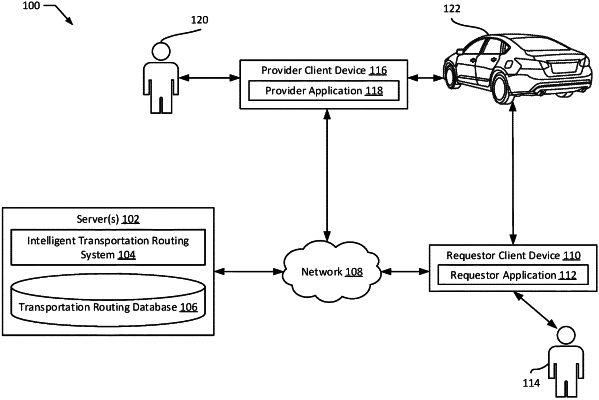| CPC G01C 21/3438 (2013.01) [G01C 21/3453 (2013.01); G06Q 10/02 (2013.01); G06Q 10/047 (2013.01); G06Q 10/063 (2013.01); G06Q 30/0284 (2013.01); G06Q 50/30 (2013.01)] | 20 Claims |

|
1. A computer-implemented method comprising:
receiving, by a transportation matching system, a transportation request from a mobile device, wherein the transportation request comprises at least two locations;
generating, in response to the transportation request, an initial route prediction, wherein the initial route prediction is generated utilizing a first predictive model based on a first set of previously-completed routes associated with the at least two locations;
comparing, utilizing a second predictive model, the initial route prediction generated utilizing the first predictive model with route information associated with a second set of previously-completed routes identified at least in part based on the initial route prediction;
generating, based on the comparison, a corrected route prediction for the transportation request; and
training the second predictive model by:
receiving, after fulfillment of the transportation request, actual route information corresponding to the fulfillment of the transportation request;
determining one or more errors between the corrected route prediction and the actual route information; and
updating the second predictive model based on the one or more errors.
|